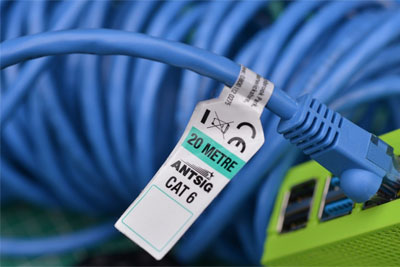Fiber Optic Equipment: What Do You Need for Internet?

: Fiber internet is fast, secure, & reliable, so long as you have the right devices!

: Fiber internet is fast, secure, & reliable, so long as you have the right devices!
When it comes to speed, reliability, and security, you can’t beat fiber internet. But all the benefits of this modern internet type are only possible with the right gear in place. Whether you're planning to upgrade your home internet connection or just curious about how fiber technology works, understanding the essential fiber optic equipment is the first step.
From the optical network terminal to the router that brings your home online, each piece plays a critical role in delivering the speedy, seamless experience fiber is known for. Let’s take a closer look at the fiber to the home equipment you’ll need and answer some of the most common questions about setting up a fiber-powered home network.
To enjoy lightning-fast downloads and stable connections with fiber internet, you need a few pieces of specialized equipment and a dedicated setup. Luckily, you don’t need to worry about a thing – your fiber provider will handle it all for you. Let’s break it down.
One of the biggest differences between traditional broadband and fiber internet is the device that connects you to the provider’s network. Instead of a modem, fiber uses an optical network terminal (ONT). This device converts the light signals sent through the fiber cable into electrical signals your home’s devices, like computers or gaming consoles, can understand.
Unlike DSL or cable internet – which use modems to connect to copper phone or coax lines – an ONT is specifically designed for fiber networks. Most of the time, ONTs are installed inside your home, generally near where the fiber cables enter your home, but you can usually request specific locations.
And here’s an important note: with fiber, you don’t need a separate modem to complete the connection. The ONT is your modem equivalent in a fiber setup. If you're used to plugging your router into a modem, you'll now connect it directly to the ONT instead.
Ethernet cables play a vital role in fiber internet installations. After the ONT does its job of converting optical signals, it passes the data along to your router via Ethernet connection. For Glo Fiber installations, the ONT generally does not transmit a WiFi signal itself. Also, you typically will not connect your devices directly to the ONT itself. Once the ONT and router are connected via Ethernet cable, the router creates a WiFi signal to connect your devices, or you can use additional Ethernet cables to connect your devices to your router.
For the best performance, you’ll want at least Cat5e or Cat6 Ethernet cables. These support gigabit speeds and are future-proofed for most residential needs. If you plan to connect gaming consoles, smart TVs, or home office setups directly, having high-quality Ethernet runs can make a noticeable difference.
Don’t have any Ethernet cables? Your fiber internet installation technician should have some for the initial setup of your fiber network. However, for additional connections, you'll need to get your own cables to plug into your router.
Speaking of routers, once the fiber signal is converted and passed along, it’s time to send that signal throughout your home. That’s where your router comes in.
A standard router may be enough for small to medium homes, but larger homes or those with complex layouts (say, houses with thick walls or multiple floors) can benefit from fiber-ready routers. These are routers designed to work with the fast speeds and other advantages fiber internet brings to the table.
On top of a router, many home fiber networks can benefit from WiFi mesh devices. These link multiple nodes to blanket your home in strong, reliable WiFi coverage, eliminating dead zones and potential buffering issues.
If you’re still wondering about what you need in terms of fiber equipment for your home, keep reading. We’ll explore some of the most common fiber equipment FAQs and their answers!
You don’t need a special router, per se, but you do need one that can handle the speed fiber provides. If you’re paying for gigabit fiber service, make sure your router supports at least gigabit Ethernet ports and dual-band or tri-band WiFi (like WiFi 5 or WiFi 6). Older routers could bottleneck your speeds.
Most fiber internet providers give you a compatible router as part of their installation package. If you prefer more advanced features – like parental controls, gaming optimizations, or smart home integrations – you might consider researching and buying your own.
Nope. With fiber, the ONT replaces the modem entirely. The ONT connects to your provider’s fiber optic network equipment, translates the signal, and hands it off to your router. So, if you’re switching from cable or DSL to fiber, you can retire that old modem – you won’t need it anymore.
Not necessarily. In most cases, the fiber to the home equipment is installed with minimal changes to your home’s existing wiring. The technician will run a fiber cable to your house and install the ONT where the line enters. From there, standard Ethernet cables carry the signal to your router or wired devices.
If you’re planning a full smart home setup or want hardwired connections in multiple rooms, you might choose to add structured cabling here and there. But for most households, that’s not required. Wireless setups, especially with mesh systems, work beautifully with fiber.
From a fiber-ready router to WiFi mesh devices that bring high-speed internet to every corner of your home, Glo Fiber provides all the equipment you need to get online and have a great time with our installation service.
Our fiber internet plans offer the speed and reliability you deserve – without hidden fees or headaches. It’s all part of our promise to deliver an excellent experience, and it starts with a single call. Get in touch today to switch to Glo Fiber!